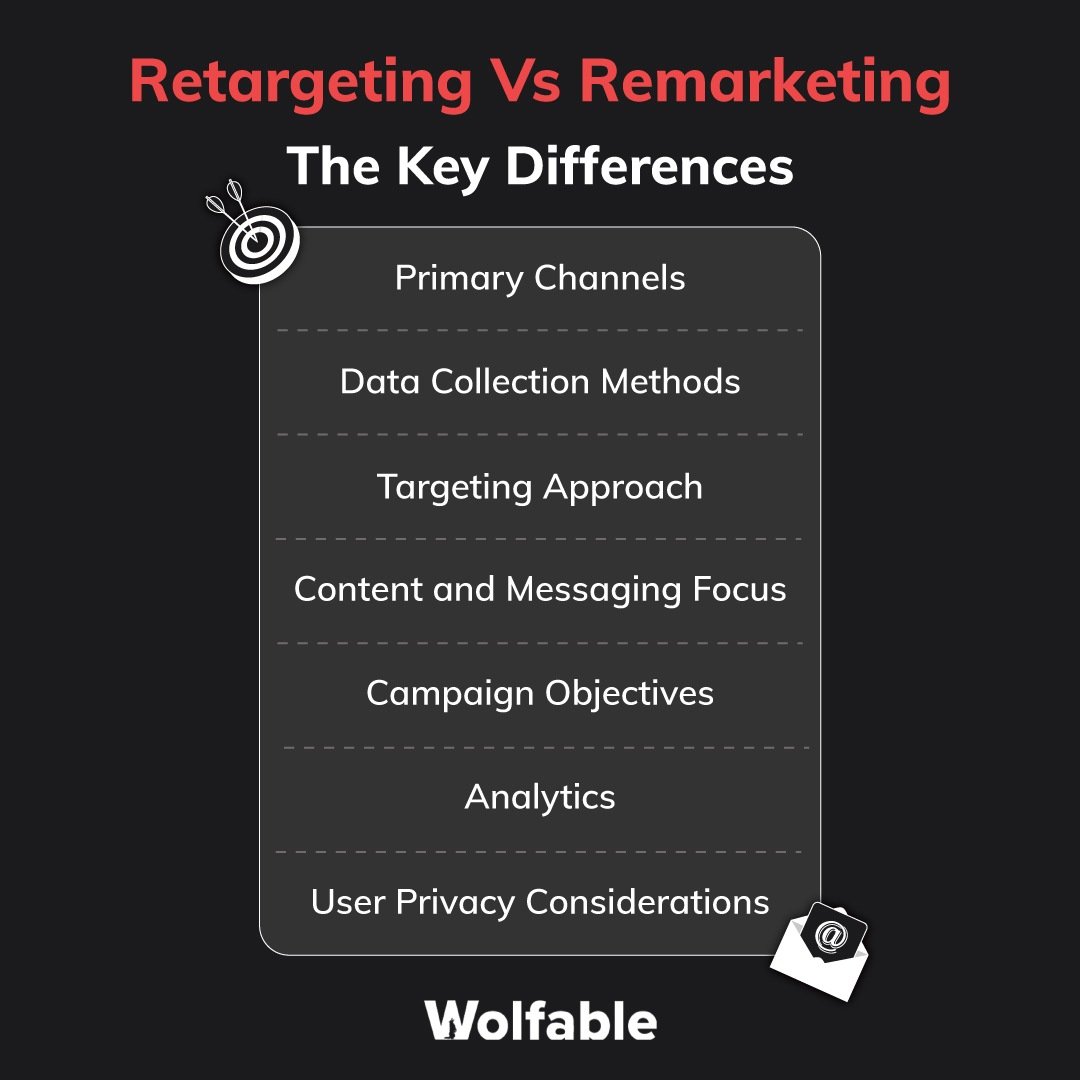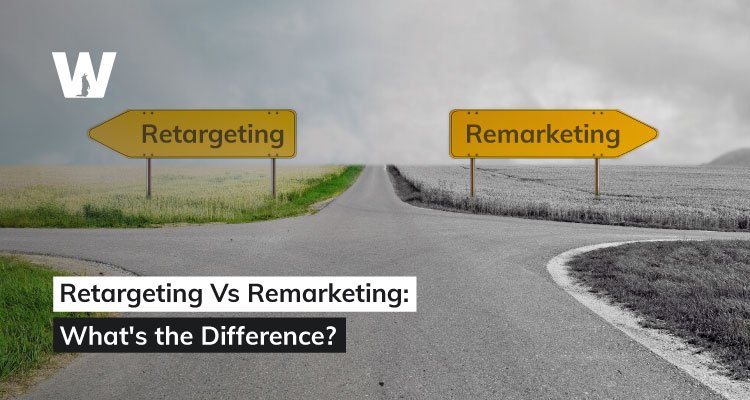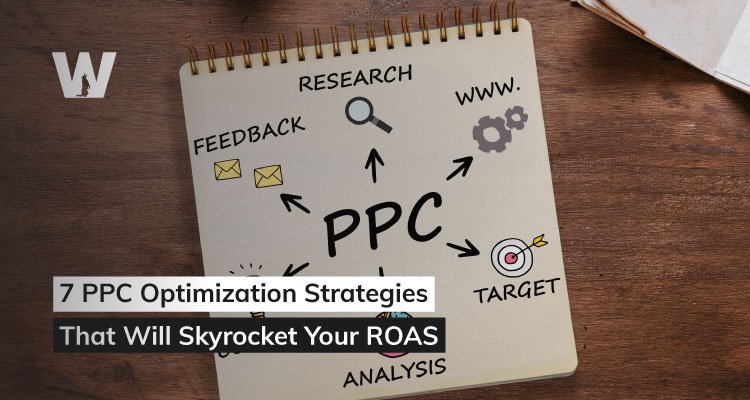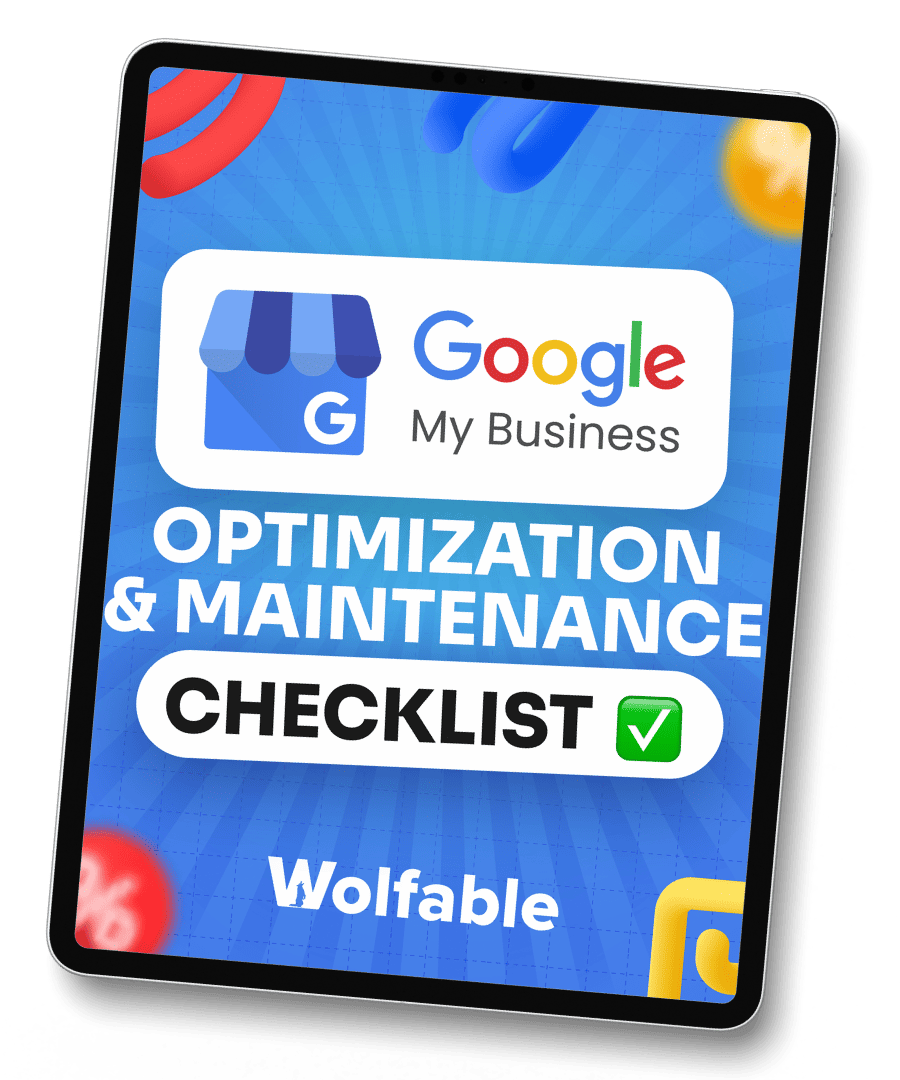Wraps up in 6 Minutes
Have you ever browsed a product online, only to close the tab and later see ads for that exact item following you around the internet?
Or perhaps you've abandoned a shopping cart, and then received an email reminder about your forgotten purchase?
If so, you've experienced two powerful marketing techniques: retargeting and remarketing.
Did you know that, on average, only 2% of website visitors convert on their first visit? That means 98% of your potential customers are slipping through your fingers!
But don't worry – that's where retargeting and remarketing come in to save the day.
Nowadays, following up with potential customers is more crucial than ever. With so many distractions and options available, it's easy for people to get sidetracked or forget about your product or service.
That's why savvy marketers use retargeting and remarketing to stay top-of-mind and nudge prospects toward conversion.
Now, you might be thinking, "Aren't retargeting and remarketing the same thing?" While these terms are often used interchangeably, they actually have distinct differences and applications.
In this post, we will discuss both retargeting and remarketing, and explore what they are, how they work, and when to use each strategy.
What is Retargeting?
Picture this - you're window shopping online, checking out a pair of snazzy sneakers. You don't buy them right away, but later that day, you start seeing ads for those exact shoes on different websites.
That, my friend, is retargeting in action.
Retargeting is a form of online advertising that keeps your brand or product in front of bounced website visitors as they browse elsewhere on the internet.
It's like a friendly reminder saying, "Hey, remember us? We're still here if you want to take another look!"
How Does Retargeting Work?
There are two main methods:
- Pixel-based retargeting: This involves placing a small piece of code (called a pixel) on your website. When a visitor lands on your site, the pixel drops an anonymous browser cookie. Later, when that cookie visitor browses other sites, the cookie tells your retargeting platform to serve specific ads based on the pages they visited on your site.
- List-based retargeting: This method uses contact information you already have, like email addresses or phone numbers. You upload this list to a retargeting platform, which then matches the information to user profiles on various networks.
When it comes to platforms for retargeting, you've got plenty of options.
Display ad networks like Google Ads can show your retargeting ads across millions of websites.
Social media platforms such as Facebook, Instagram, and LinkedIn also offer powerful retargeting capabilities, allowing you to reach users as they scroll through their feeds.
Different Types of Retargeting
Different Types of Retargeting
- Site retargeting: This targets users who have visited your website but didn't convert.
- Search retargeting: Here, you target users who have searched for keywords related to your product or service, even if they haven't visited your site.
- Social media retargeting: This focuses on users who have interacted with your social media content or visited your social profiles.
The benefits of retargeting are pretty sweet. It helps you stay connected with interested prospects, increases brand recall, and can significantly boost conversion rates.
Plus, it's often more cost-effective than targeting cold audiences since you're reaching people who have already shown some interest in what you offer.
Overall, retargeting can be a powerful tool in your marketing arsenal. It's like having a second (or third, or fourth) chance to make a great impression on potential customers.
What is Remarketing?
Now that we've covered retargeting, let's shift gears and talk about remarketing.
If retargeting is like a digital billboard that follows you around the internet, remarketing is more like a personalized letter delivered straight to your inbox.
Remarketing is a technique that involves reaching out to people who have already interacted with your brand, typically through email or other direct communication channels. It's about nurturing those existing relationships and encouraging past customers or leads to re-engage with your business.
How Does Remarketing Work?
There are two main approaches:
- Email-based remarketing: This involves sending targeted emails to people based on their previous interactions with your brand. For example, if someone abandons their shopping cart, you might send them an email reminder about the items they left behind.
- Customer segmentation: This strategy involves dividing your customer base into groups based on their behavior, preferences, or demographics. You can then create tailored remarketing campaigns for each segment.
When it comes to remarketing platforms, email marketing software like Mailchimp or ConstantContact are popular choices. Customer Relationship Management (CRM) systems like Salesforce or HubSpot also play a crucial role in organizing customer data and automating remarketing efforts.
Types of remarketing campaigns
There are three main types of retargeting campaigns you can leverage:
- Abandoned cart emails: These remind shoppers about items they left in their online shopping cart.
- Post-purchase follow-ups: These emails might ask for product reviews, offer complementary products, or provide usage tips.
- Win-back campaigns: These target customers who haven't made a purchase in a while, often with special offers to entice them back.
The benefits of remarketing are pretty impressive. It helps you stay connected with your audience, increases customer lifetime value, and can significantly boost repeat purchases.
Plus, since you're reaching out to people who already know your brand, conversion rates tend to be higher than with cold marketing efforts.
But like any marketing technique, remarketing has its challenges. You need to be careful not to overwhelm your audience with too many emails, or you risk being marked as spam.
And of course, you need to be mindful of data privacy regulations when collecting and using customer information.
Despite these potential hurdles, remarketing remains a powerful tool for building lasting relationships with your customers and maximizing the value of your existing audience.

Now that we've explored retargeting and remarketing separately, let's put them side by side and see how they stack up.
- Primary Channels: Retargeting primarily operates in the realm of display advertising and social media platforms. It's all about those visual ads that pop up as you browse the web or scroll through your social feeds. Remarketing, on the other hand, typically relies on more direct communication channels, with email being the most common.
- Data Collection Methods: Retargeting often uses browser cookies or pixel tracking to identify and follow users across the web. Remarketing, meanwhile, relies more heavily on first-party data that you've collected directly from your customers, such as email addresses or purchase history.
- Targeting Approach: Retargeting casts a wider net, often reaching people who have shown some interest in your brand but may not have made a purchase yet. Remarketing tends to be more focused on nurturing existing customer relationships and encouraging repeat business.
- Content and Messaging Focus: Retargeting ads are usually more visual and product-focused, designed to catch the eye and remind people of what they were interested in. Remarketing messages, especially in email form, can be more personalized and detailed, often including things like product recommendations, special offers, or helpful content.
- Campaign Objectives: Retargeting often aims to bring people back to your website to complete a specific action, like making a purchase or signing up for a newsletter. Remarketing campaigns might have broader goals, such as increasing customer loyalty, reactivating lapsed customers, or cross-selling related products.
- Analytics: Retargeting metrics often focus on click-through rates, conversion rates, and return on ad spend. Remarketing might look at metrics like email open rates, customer lifetime value, and repeat purchase rates.
- User Privacy Considerations: Retargeting, especially when using third-party cookies, has faced increasing scrutiny and regulation. Remarketing, while still subject to data privacy laws, often relies on information that customers have directly provided, which can be less controversial.
Understanding these differences can help you choose the right strategy for your specific marketing goals and make the most of both retargeting and remarketing in your overall marketing strategy.
When to Use Retargeting?
Retargeting is particularly effective when you want to:
1. Recapture the interest of website visitors who didn't convert
If someone has browsed your products or services but didn't make a purchase, retargeting can give them a gentle nudge.
2. Increase brand awareness
By showing your ads to people who have visited your site, you keep your brand fresh in their minds, even if they're not ready to buy yet.
3. Promote specific products or offers
If you're running a sale or want to push a particular product line, retargeting can help you reach people who have shown interest in similar items.
4. Support content marketing efforts
If someone reads a blog post on your site, you could retarget them with ads for related content or products.
Certain industries tend to benefit more from retargeting than others.
E-commerce businesses, for example, often see great results from retargeting campaigns, especially for abandoned cart recovery. Travel and hospitality companies also find retargeting useful for reaching people who have been researching trips but haven't booked yet.
B2B companies with longer sales cycles can use retargeting to stay top-of-mind with potential clients over time.
When to Use Remarketing?
Alright, now talk about when remarketing is your best bet.
While retargeting is great for catching the attention of website visitors, remarketing shines when it comes to nurturing relationships with people who have already engaged with your brand in a more significant way.
Here are some scenarios where remarketing can be particularly effective:
1. Re-engaging past customers
If someone has bought from you before but hasn't made a purchase in a while, a remarketing email could remind them of your value and bring them back.
2. Upselling or cross-selling to existing customers
You can use remarketing to suggest complementary products or upgrades based on a customer's purchase history.
3. Recovering abandoned carts
While this can also be done with retargeting, email remarketing can be especially effective for reminding people about items they left in their carts.
4. Gathering feedback or reviews
After a purchase, you can use remarketing to ask customers for their thoughts on the product or service.
5. Providing valuable content
Remarketing isn't just about selling. You can use it to share helpful tips, guides, or updates related to what the customer has purchased or shown interest in.
Industries that often see great results from remarketing include subscription-based services (like software or meal delivery kits), online education platforms, and businesses with loyalty programs.
These types of businesses benefit from the ongoing relationship-building that remarketing facilitates.
Remember, the key to successful remarketing is relevance and timing. You want to reach out to your customers with the right message at the right time, adding value to their experience with your brand rather than becoming an annoyance in their inbox.
Best Practices for Retargeting
Now that you know when to use retargeting, let's talk about how to do it well.
Following these best practices can help you create retargeting campaigns that are effective, and not annoying.
- Frequency Capping: This is the practice of limiting how often a user sees your ads. You don't want to bombard people with the same ad every time they go online – that's a fast track to ad fatigue and potential brand resentment. A good rule of thumb is to cap your ads at 15-20 impressions per user per month, but you might want to experiment to find what works best for your audience.
- Segmentation: Don't treat all your website visitors the same. Someone who spent 10 minutes browsing your product pages is probably more interested than someone who bounced after 5 seconds. Create different audience segments based on factors like pages visited, time on site, or stage in the buying journey. Then, tailor your ads to each segment.
- Landing Page Optimization: Landing page optimization is often overlooked in retargeting campaigns, but it's crucial. You need to make sure the page you're sending people to matches the promise of your ad and makes it easy for users to take the desired action. If your ad offers a discount, that discount should be front and center on the landing page.
- A/B Testing: A/B testing different elements of your retargeting campaigns can help you continually improve your results. Try testing different ad creatives, calls-to-action, landing pages, or audience segments. Use the data from these tests to refine your approach over time.
Remember, effective retargeting is about being helpful and relevant, not pushy or intrusive. When you follow these best practices, you can create retargeting campaigns that your audience appreciates rather than avoids.
Best Practices for Remarketing
While remarketing shares some best practices with retargeting, it has its own unique considerations, especially when it comes to email marketing.
- Personalization: Personalization is key in remarketing. You are speaking to users who have previously engaged with your brand in some way, and blanket messages simply won't cut it. Use every piece of data you have on your customers in personalizing messages. This can be as simple as using their name in your email or as complex as product recommendations based on their purchase history.
- Timing and Frequency: Timing and frequency are crucial in remarketing. You want to reach out at the right moment – not so soon that you seem pushy, but not so late that the customer has forgotten about you. As for frequency, be careful not to overwhelm your customers. A good rule of thumb is to not send more than one marketing email per week unless the customer has explicitly opted in for more frequent communication.
- Content and Offer Strategies: Your remarketing messages shouldn't just be sales pitches. Mix in helpful content, like product usage tips or industry insights. When you do make offers, make them relevant and appealing. A discount on a complementary product to one a customer has already purchased, for instance, can be very effective.
- List Management & Hygiene: List management and hygiene are often overlooked but are crucial for effective remarketing. Regularly clean your email list to remove inactive subscribers and invalid email addresses. This not only improves your deliverability rates but also gives you a more accurate picture of your campaign performance.
Remember, the goal of remarketing is to nurture relationships and provide value to your customers.
With these best practices, you can create remarketing campaigns that your audience looks forward to receiving, rather than sending straight to the spam folder.
Conclusion
We've seen that while retargeting and remarketing are often used interchangeably, both are quite different from one another.
And guess what? you don't have to choose between retargeting and remarketing. In fact, the most effective digital marketing strategies often use both in harmony. It's all about finding the right mix for your unique business goals and audience needs.
But if you're feeling a bit overwhelmed by all this information, don't worry. Implementing effective retargeting and remarketing strategies can be complex, especially when you're trying to run a business at the same time. That's where partnering with experts can make all the difference. Enter Wolfable Agency. We have the expertise to help you navigate the intricacies of retargeting and remarketing, crafting strategies that are tailored to your specific needs.
So, whether you're looking to boost your e-commerce sales, generate more leads for your B2B service, or anything in between, Wolfable Agency has got your back.








